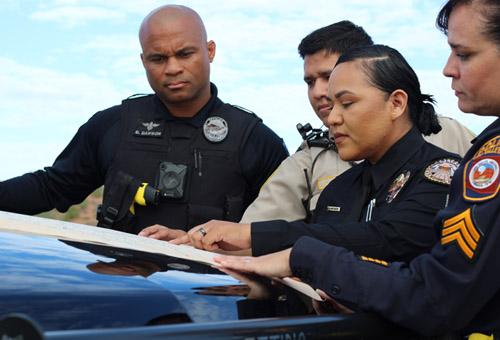


Gather up-to-date information for the investigation and prosecution of all types of child abuse cases utilizing a multidisciplinary team (MDT) approach. Learn about medical evidence, interviewing child victims/witnesses and adult suspects/witnesses, along with legal issues involved in the investigation and prosecution of child physical and sexual abuse cases. Discuss trends in offenders’ use of technology, the use of child sexual abuse material (CSAM), and sextortion. Learn law enforcement investigative techniques that capitalize on new technology.

Learn how to objectively investigate child death cases particularly when the cause and manner of death is unexplained. Examine investigative mindset from initial call-out to case resolution and learn how to gain an understanding of what happens with a victim-centered approach, exploring the emotional trauma of the non-offending caregiver. Discuss possible causes of death and best practices and tips including various investigative steps for evidence collection, witness and suspect interviews. This basic course offers law enforcement, CPS, and other child death investigators up-to-date practices for the investigation of child deaths.

Suspects use a number of behaviors to gain the cooperation and trust of their victims. When working child abuse investigations, it is critical to identify and understand the grooming techniques that are used to manipulate both children and their caretakers in order to gain the necessary access to commit their crimes. Investigators must also be prepared to explain the dynamics of grooming in both criminal and family court hearings.

Explore the intersection of sexually transmitted infections (STIs) and child sexual abuse investigations. Successful collaboration with multidisciplinary team (MDT) members hinges upon a shared understanding of common STIs, appropriate timing and methods for medical evaluation, and the forensic interpretation of STI diagnoses.

Discover how to use data to assist in the identification of missing and exploited children. Review a child exploitation case study from start to finish, and apply thinking outside the normal avenues to solve an investigation with technology.

Explore investigative strategies that address the relationship between child sexual abuse and child sexual abuse materials (child pornography) to supplement an investigation and corroborate victim statements. Gather new tools and resources for the most comprehensive case outcomes.

Examine the importance of multidisciplinary team (MDT) case coordination and evidence corroboration in the investigation of child abuse cases. Various members of the Multidisciplinary Team, such as law enforcement, child protective services, and forensic interviewers may gather different or differing information. Learn how to evaluate evidentiary findings through crime scene images, interviews and case studies. Understand multidisciplinary team members' roles and responsibilities for protecting child victims and prosecuting offenders. Focus on offenders’ use of technology, including the use of child sexual abuse material (CSAM) in grooming and manipulation. Discuss a variety of technology that can be used by investigators.

Gain an understanding of child sexual abuse (CSA) prevention and review/evaluate different programs available to protect children. Identify what works and what doesn’t in prevention programs and discuss how to talk to children about CSA. Gather new resources for working with children with significant disabilities as well as research on CSA programs.

Learn how to effectively perform missing child investigations occurring on tribal lands. Examine the AMBER Alert program, best practices for planning and executing the initial response when a child goes missing, effective investigative case management strategies, timely introduction of resources in missing child investigations, best practices in search and canvass operations, and how to incorporate culturally appropriate victim support services into your investigation. Explore resources and tools currently available to assist law enforcement officers in missing child investigations.

Child sex trafficking (CST) is like no other crime. Victimization may happen hundreds of times and can be difficult to identify due to the victims being missing children coupled with the trafficker’s hold on victims. Dissect the crime of CST, its complex nature, and discover how to investigate this crime fully. Develop trauma-informed approaches to ensure your victim interview does not retraumatize and you gain critical information to identify corroborative evidence. Examine the trafficker’s profile and motivation, how they impact your suspect interview, and proven suspect interview strategies. Recognize common evidence available, legal hurdles, and common defenses of traffickers.
